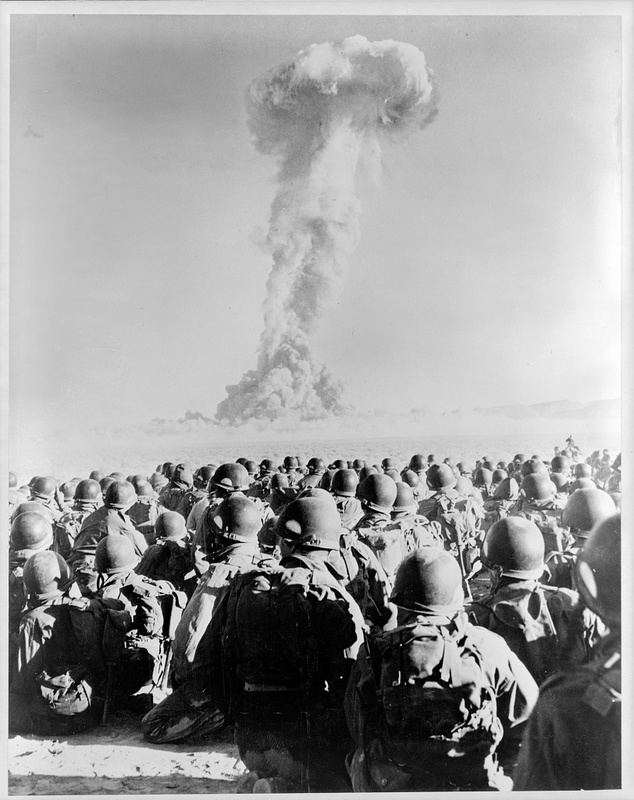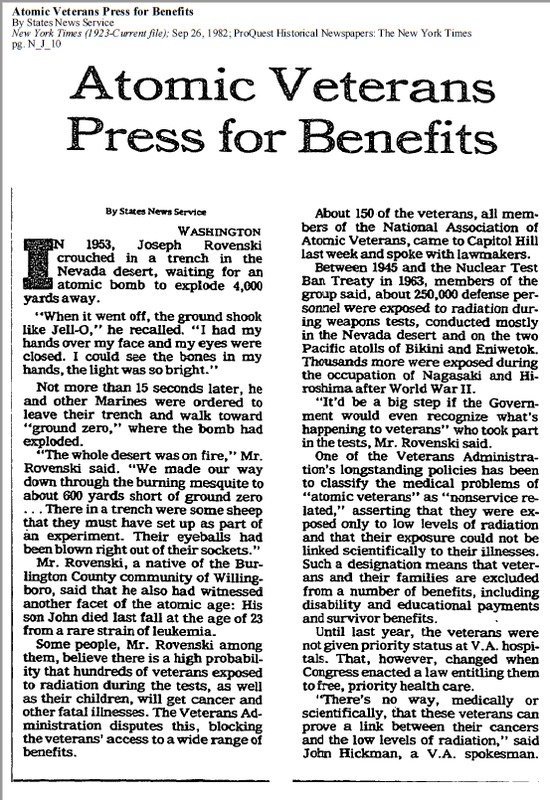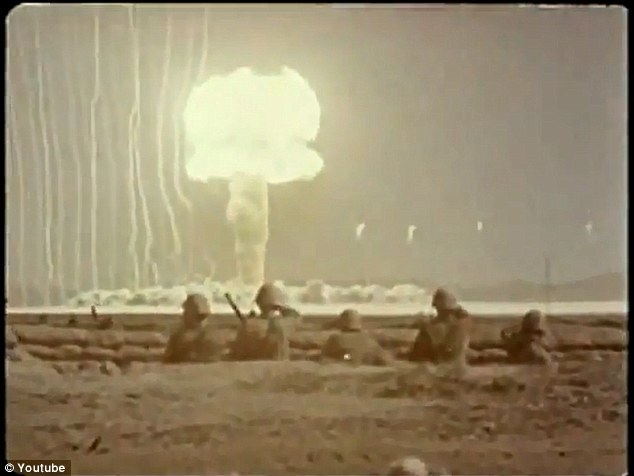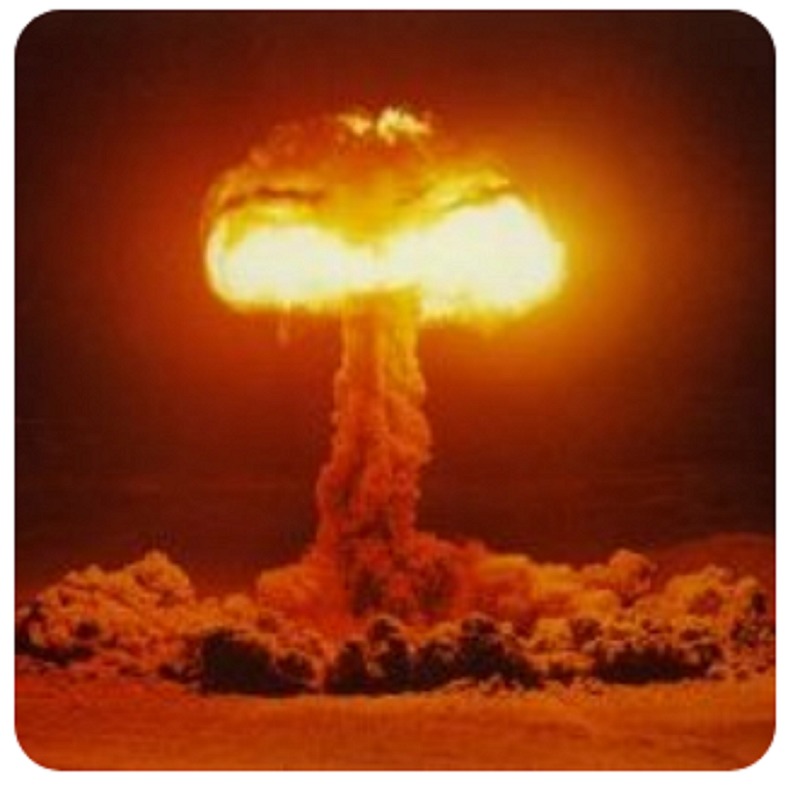Atomic Veterans: Orville E. Kelly and Thomas H. Saffer

Soldiers know that risking their lives is a part of their duty to their country, but what does it mean to die for your country as a guinea pig? Orville E. Kelly, Thomas H. Saffer, and many other atomic veterans have asked themselves that very question.
It was 5:30 a.m. on the morning of June 24, 1957 when second-lieutenant Thomas H. Saffer knelt in a trench at the Nevada Nuclear Testing Site. He and his fellow service-men had been assigned to experience the full effects of a nuclear explosion as part of the Plumbbob series. Saffer had been told that kneeling in the trench just two miles away from ground zero would protect him from the gamma rays because they only traveled in a horizontal direction. All he needed to do was kneel down, cover his eyes with his arm, and brace himself. An inter-com announced the count-down: Three, two, one . . .
"At zero, I heard a loud click. Immediately, I felt an intense heat on the back of my neck. A brilliant flash accompanied the heat, and I was shocked when, with my eyes tightly closed, I could see my bones in my forearms as though I were examining a red x-ray . . . I had been bounced helplessly around in the trench for ten to twelve seconds that seemed like an eternity. I felt as though I had been attacked and savagely beaten by a gang of toughs who hammered on my helmet and tore at my clothing from all sides. I was alive but dazed. No one had prepared me for what I had experienced. Had something gone wrong or was my encounter typical of a nuclear explosion?"
Saffer’s experience actually was typical for the thousands of soldiers who participated in the nuclear testing from 1945 to 1963. Later, he discovered that he was not the only veteran to develop serious health problems due to the heavy doses of radiation released during the nuclear explosions. An estimated 250,000 defense personnel were exposed to radiation during the United States nuclear weapons tests. For some, it meant cancer and premature death. Over the years, soldiers realized the effects of their service on their lives and fought for reparations.
In 1979, Orville E. Kelly organized the NAAV or the National Association of Atomic Veterans “for the purposes of allowing the U.S. Atomic Veteran Community to speak, with a single voice, to their inability to get a fair hearing related to their developing (radiogenic) health issues.” He was the first Atomic Veteran to be awarded compensation by the Veterans Association for the effects of radiation. In 1996, the Repeal of Nuclear Radiation and Secrecy Agreements Law allowed veterans to share their experiences during nuclear testing. The Compensation Act of 1988, the Radiation Exposure Compensation Act in 1990, and the 1995 Advisory Committee on Human Radiation Experiments all acknowledged the mistake of the federal government to not inform soldiers and citizens of the dangers of nuclear testing.
The government performed the tests in the name of national security, but in the end its own citizens were harmed. While the atomic bomb is often debated in the terms of war, it is important to acknowledge the costs at home.
Images




